I hear that the Northeast got blasted again by late-winter snow and wind. For our part, we did get some fast thick snow for a few minutes today. It was just beginning when I looked out my back door.
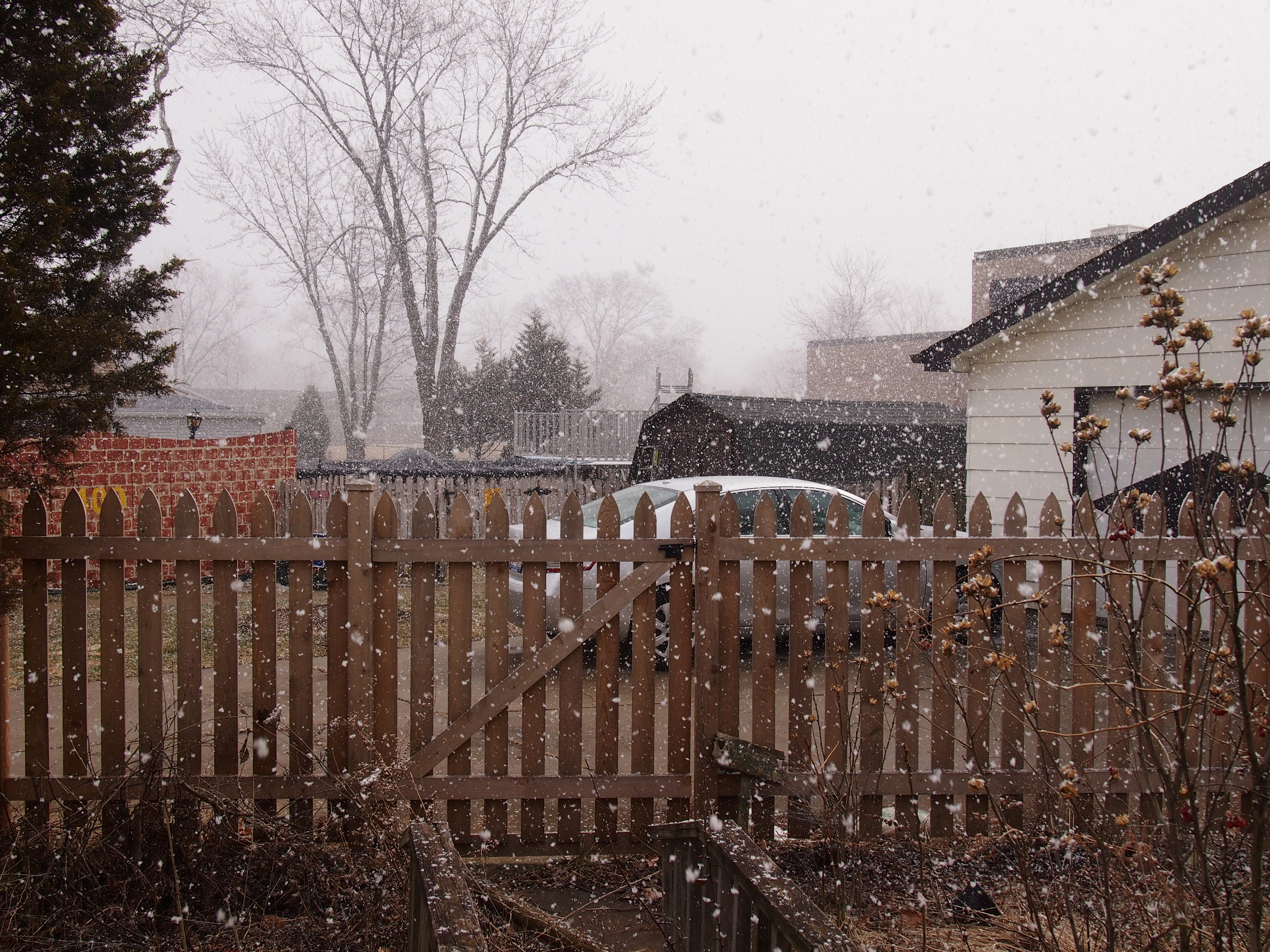 Not much all together, but it reached impressive near-whiteout for a short time. Reminded me of a moment in 1980 — I think it was March — when Nashville experienced about five minutes’ of snowy whiteout. I watched it unfold from my fifth-floor dorm window; it was like a giant feather pillow had been opened in the sky. Made an impression on a lad from South Texas.
Not much all together, but it reached impressive near-whiteout for a short time. Reminded me of a moment in 1980 — I think it was March — when Nashville experienced about five minutes’ of snowy whiteout. I watched it unfold from my fifth-floor dorm window; it was like a giant feather pillow had been opened in the sky. Made an impression on a lad from South Texas.
On Sunday, I tried to time our visit to Hyde Park to see Patience so that we could see something else as well. Namely, the Smart Museum of Art, which is the fine arts museum of the University of Chicago. I couldn’t remember the last time I was there. Sometime in the 2000s, probably.
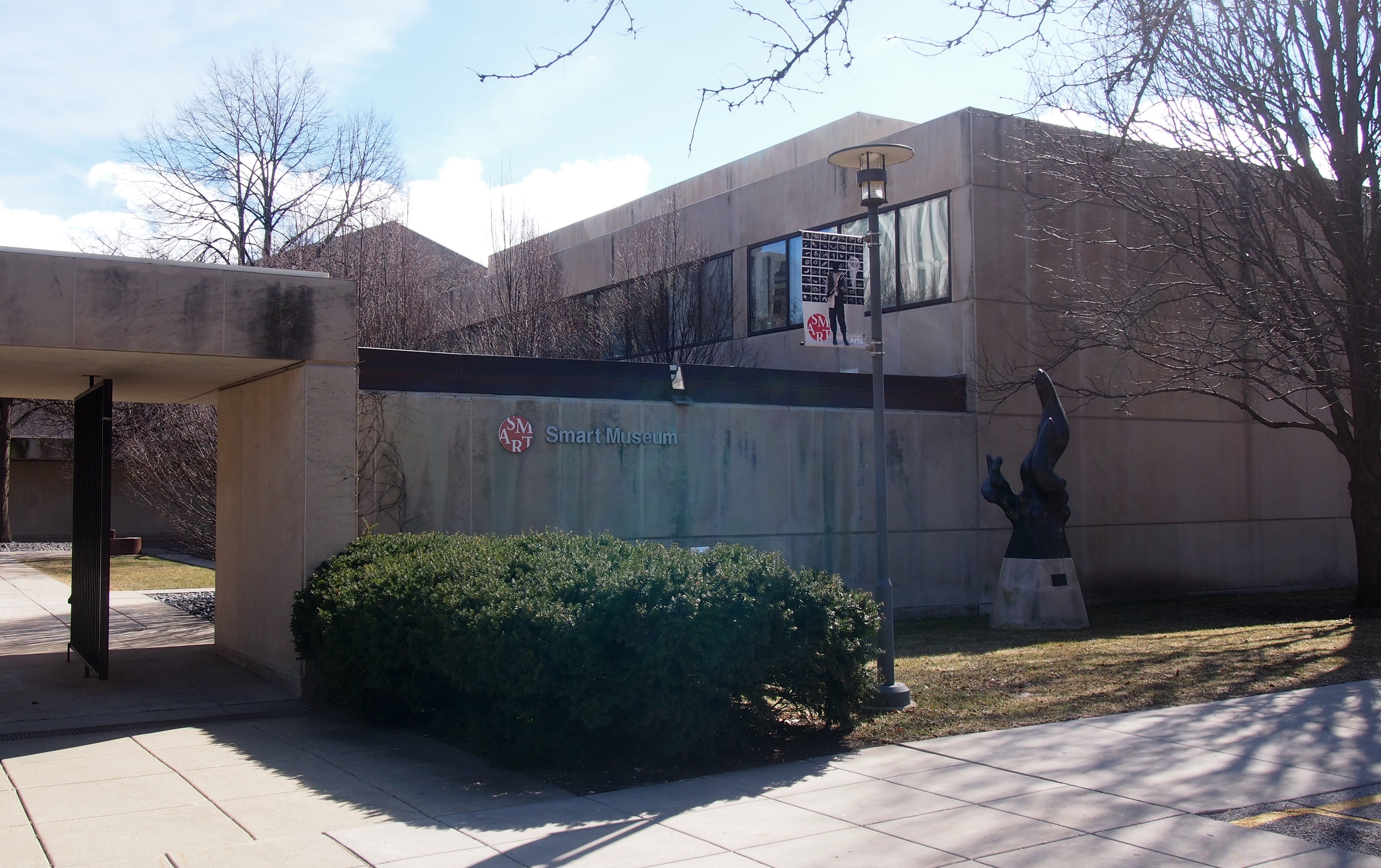 In full, it’s the David and Alfred Smart Museum of Art. The Smart brothers were big-time publishers once upon a time, whose publications included Esquire and Coronet. Their foundation ponied up funds to establish the museum long after they were dead, with the building going up in the early 1970s. It’s a smaller work by architect Edward Larrabee Barnes, who’s better known for the Dallas Museum of Art, Walker Art Center, and the IBM Building in Manhattan.
In full, it’s the David and Alfred Smart Museum of Art. The Smart brothers were big-time publishers once upon a time, whose publications included Esquire and Coronet. Their foundation ponied up funds to establish the museum long after they were dead, with the building going up in the early 1970s. It’s a smaller work by architect Edward Larrabee Barnes, who’s better known for the Dallas Museum of Art, Walker Art Center, and the IBM Building in Manhattan.
It’s a small museum. That’s one of its virtues. Also, no charge to get in. Most importantly, the museum has an interestingly varied collection, including 20th-century American works, European paintings from earlier centuries, even earlier works from China, and some very new items.
A number of works caught my eye. Such as “Still Life #39” by Tom Wesselmann, 1964.
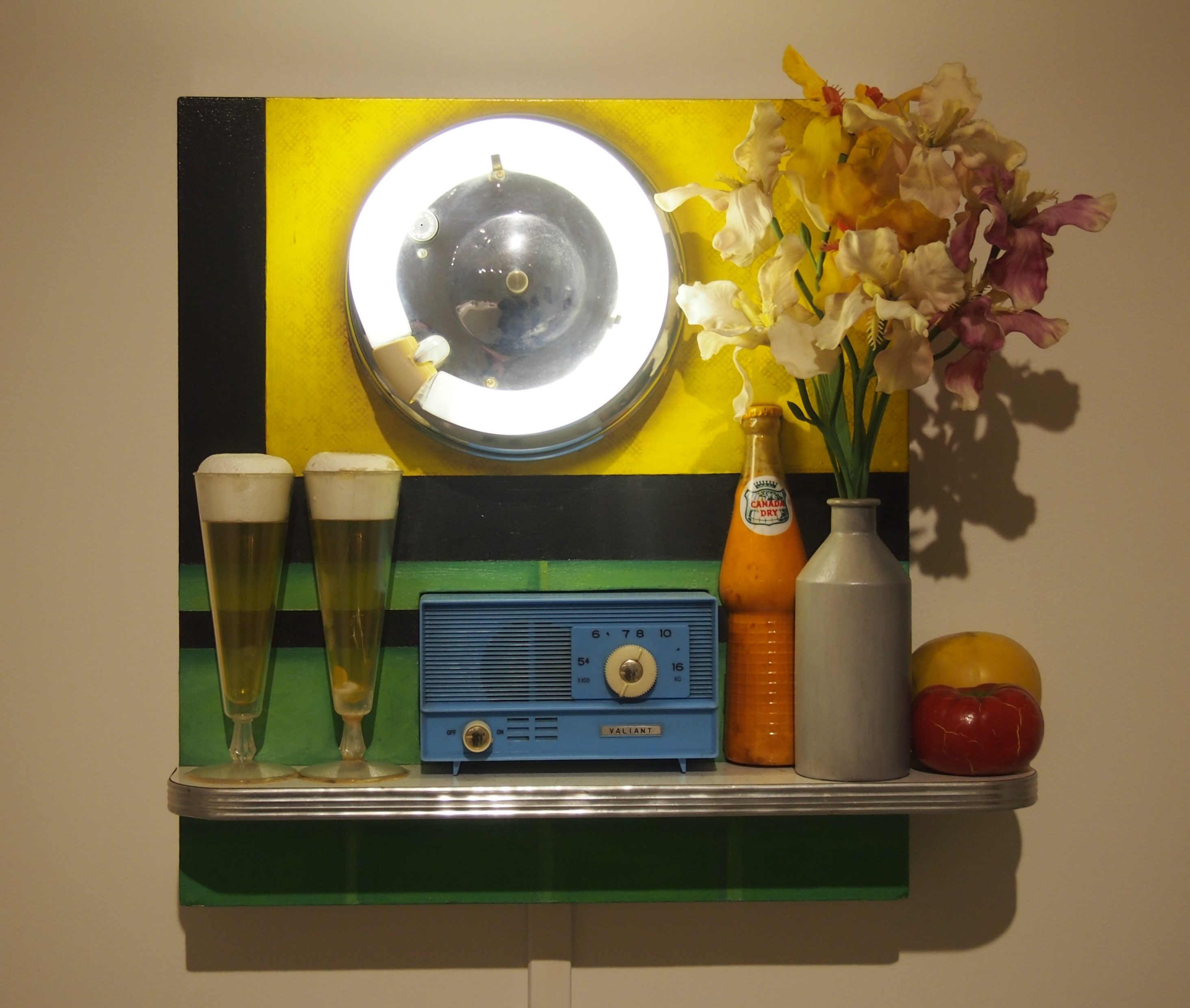 A “Thinker.” Yuriko wondered just how many Thinkers there are. I couldn’t say.
A “Thinker.” Yuriko wondered just how many Thinkers there are. I couldn’t say.
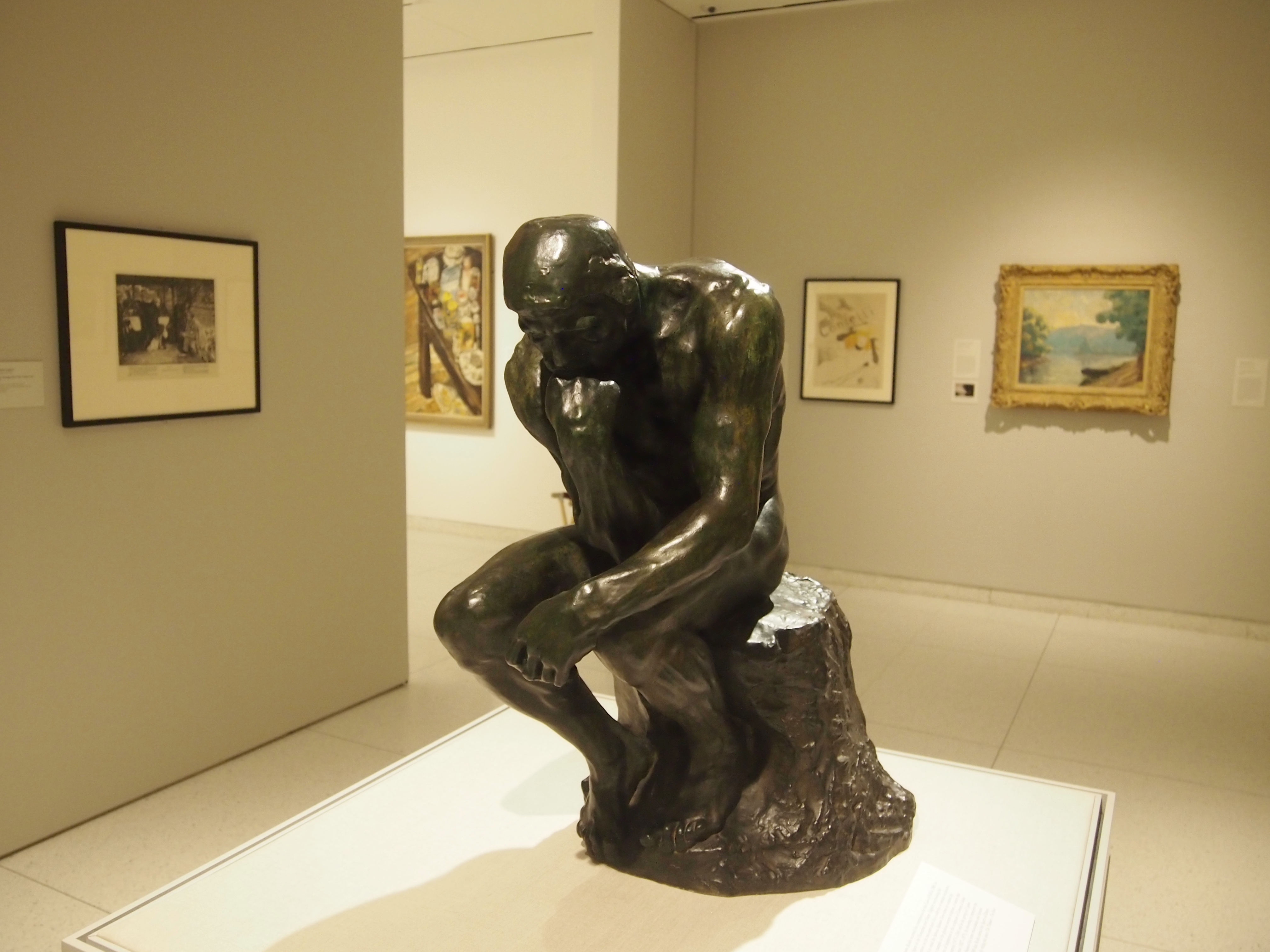 “Untitled” by Norman Lewis, 1947.
“Untitled” by Norman Lewis, 1947.
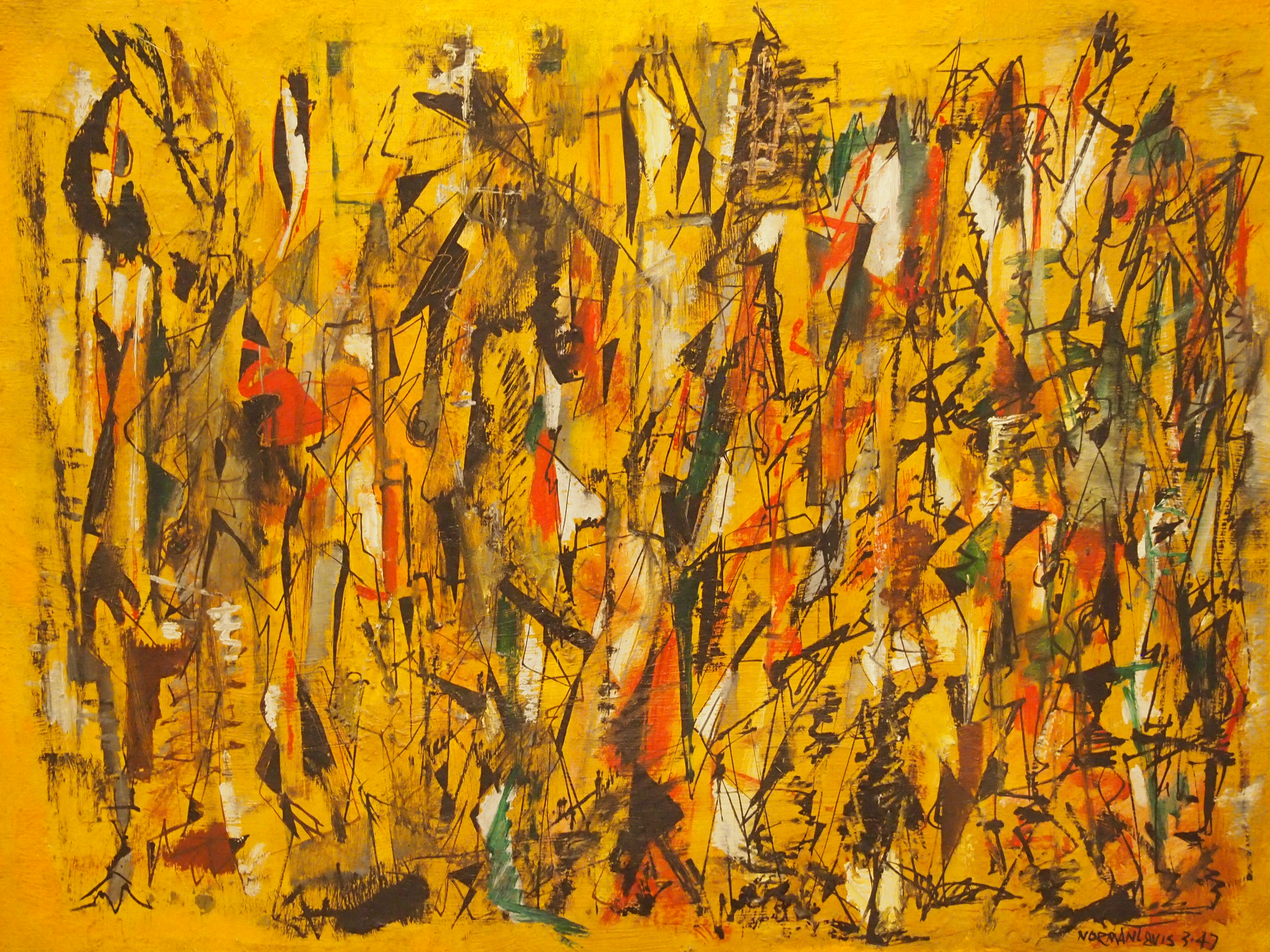 “#9 New York 1940” by Charles (Karl Joseph) Biederman, 1940.
“#9 New York 1940” by Charles (Karl Joseph) Biederman, 1940.
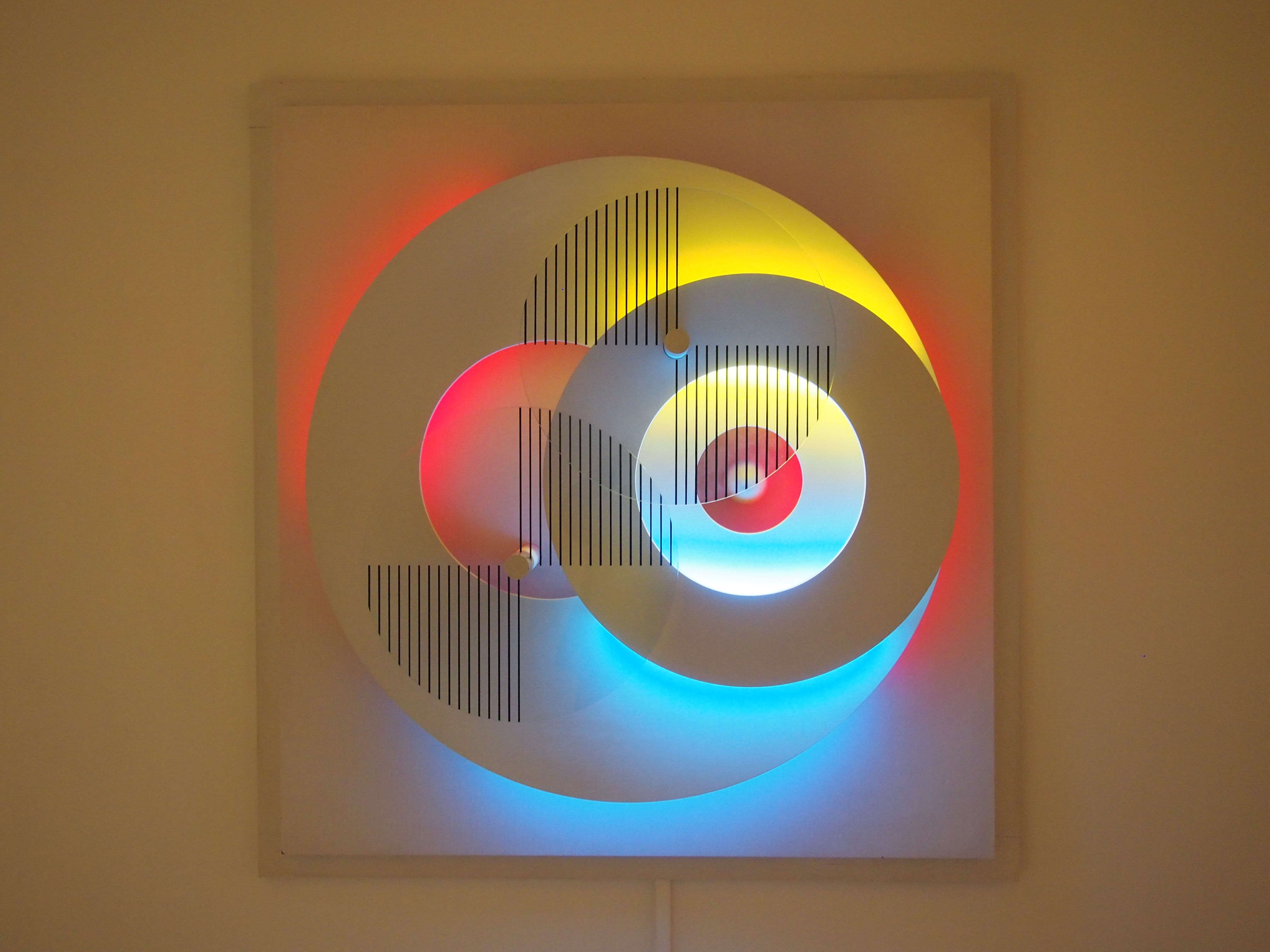 In a room by itself, we found “Infinite Cube” by Sir Antony Gormley, 2014.
In a room by itself, we found “Infinite Cube” by Sir Antony Gormley, 2014.
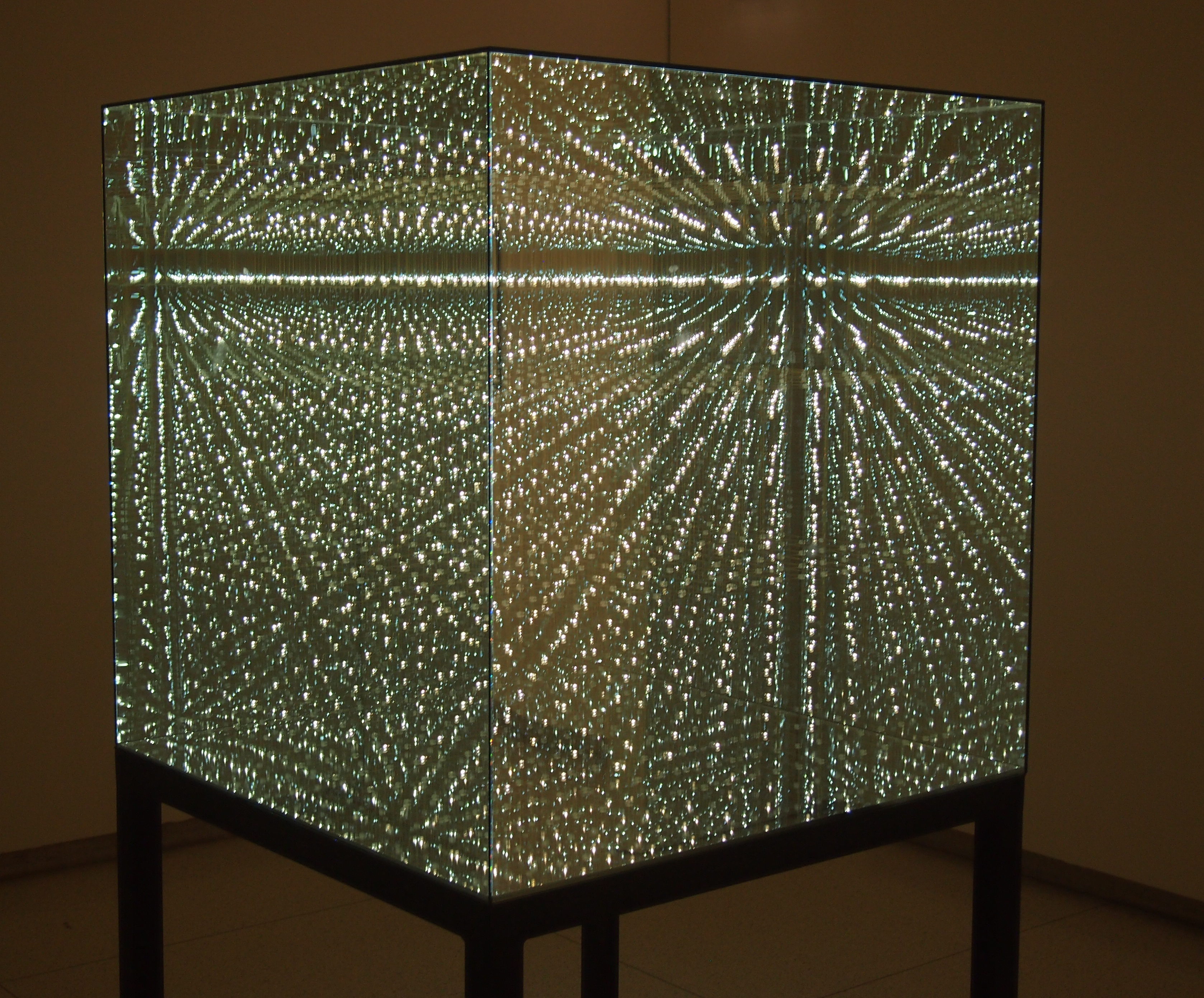 Wow. The sign described it as “mirrored glass with internak copper wire matrix of 1,000 hand-soldered omnidirectional LED lights.” Sounds labor-intensive. We spent a while admiring the thing, which was a different experience each time you moved closer or further away.
Wow. The sign described it as “mirrored glass with internak copper wire matrix of 1,000 hand-soldered omnidirectional LED lights.” Sounds labor-intensive. We spent a while admiring the thing, which was a different experience each time you moved closer or further away.
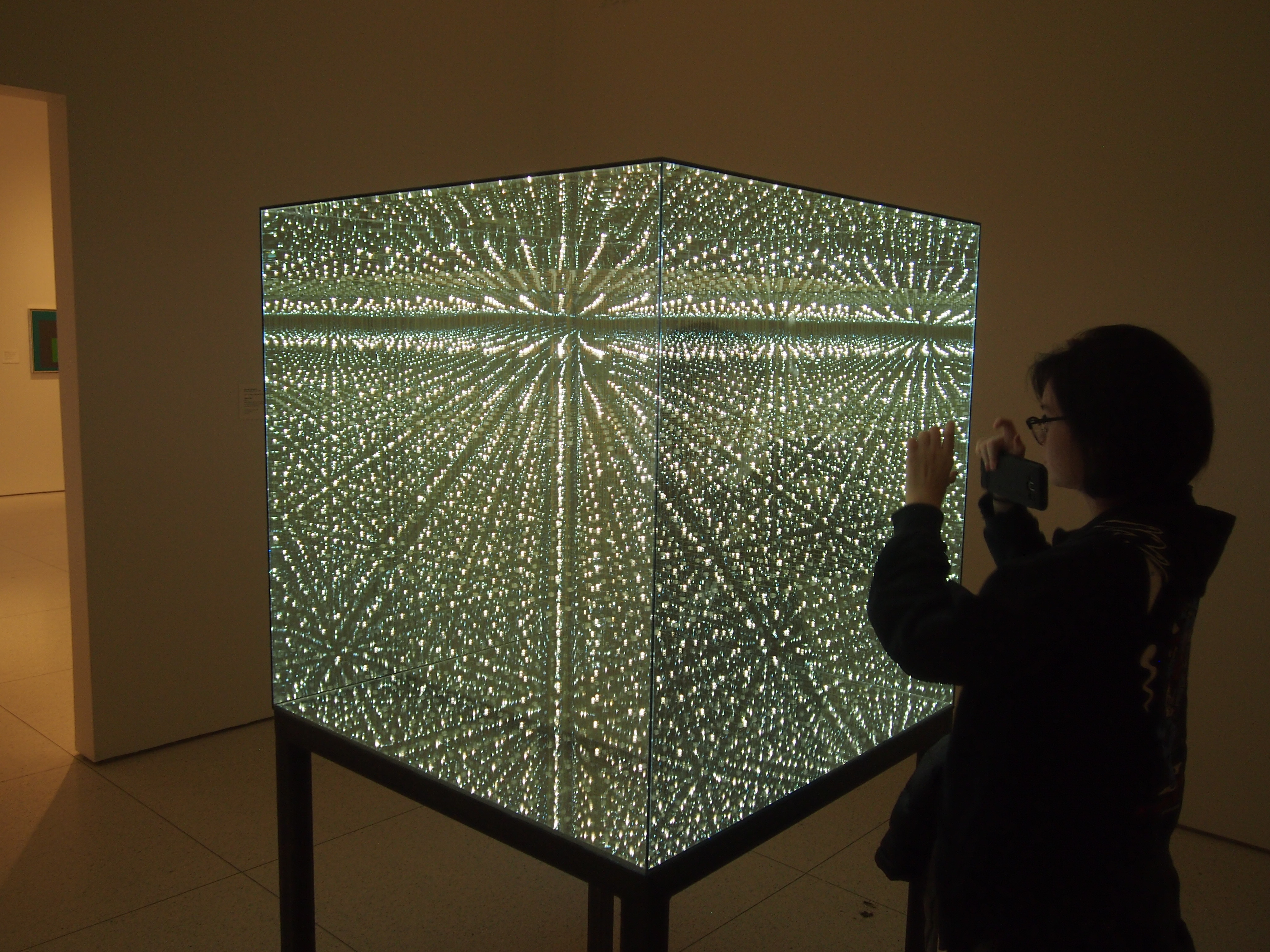 I even got a self-portrait with it — accidentally. Ann’s on the other side, with only her feet visible.
I even got a self-portrait with it — accidentally. Ann’s on the other side, with only her feet visible.
 Nice work, Sir Antony.
Nice work, Sir Antony.